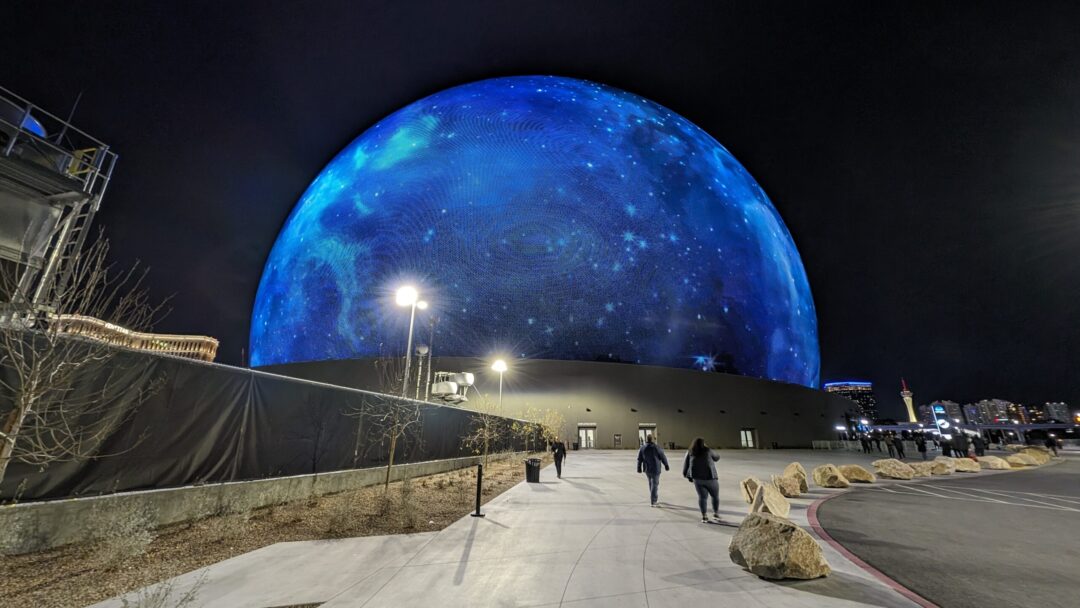When L&B Tech Reviews attended the CES trade fair in Las Vegas earlier in January, we were naturally curious to see what the world’s electronics manufacturers would present. But a completely different attraction we also had on our bucket list was, of course, The Sphere!
Sphere is one of the newest entertainment venues on the Las Vegas Strip. The mesmerising structure is located next to the Venetian and Palazzo hotels. The extravagant structure was completed in July 2023, took five years to build and cost $2.3 billion(!) to realise.
The spherical LED building is also equipped with a whopping 164,000 surround speakers. Beat that!
Sphere in Las Vegas: Huge, spherical entertainment venue
Anyone who has visited Las Vegas can attest to the fact that everything is a little bigger than other places, and Sphere is undoubtedly a building for the record books too.
With a height of 112 metres and a width of 157 metres, this is the world’s largest spherical building. The exterior is clad with 1.2 million LEDs, forming a continuous, spherical LED screen. The building can be glimpsed on the approach to Las Vegas, where it is illuminated with graphics, adverts and all kinds of circular motifs.
Inside Sphere sits another giant but much sharper spherical LED screen. It spans 270 degrees, wrapping around the audience to the side and above our heads. The total screen area is 15,000 square metres and the resolution is 16K, equivalent to 132 megapixels.
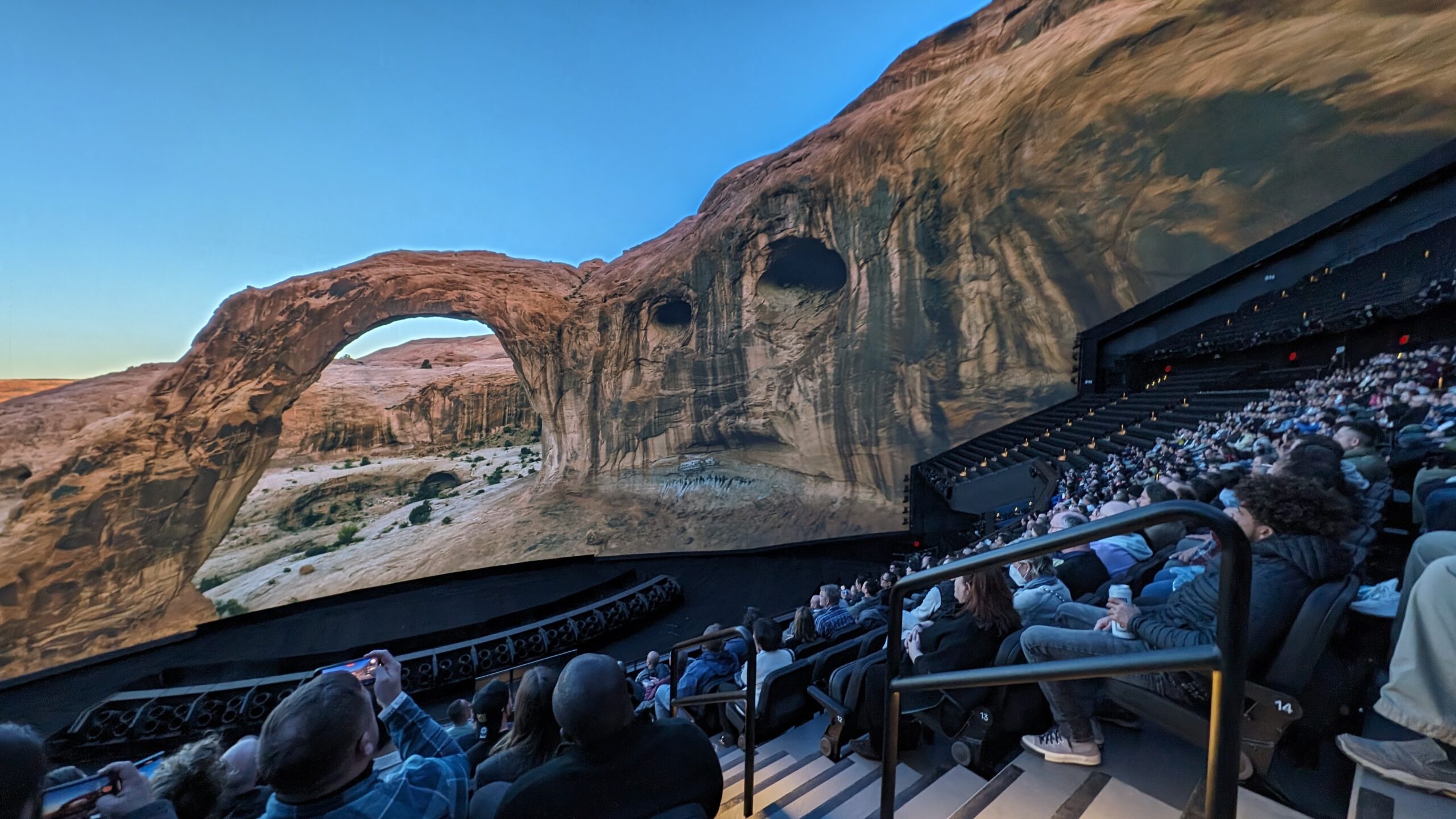
Such a colossal screen naturally needs a sound system to match, and the developers of Sphere have gone to great lengths here. The screen wall is partly acoustically transparent, allowing sound from a total of 164,000 speakers (!) mounted on the back to pass through. There are also separate speakers in the floor under the seats.
The speakers emit 3D surround sound from all directions, allowing music and sound effects to be localised and shaped precisely in relation to the objects on the screen. Advanced techniques such as beamforming and wavefield synthesis are used to deliver clear and realistic sound to all seats. Everything from small insect sounds to large natural phenomena will be reproduced with a realistic level and scale.
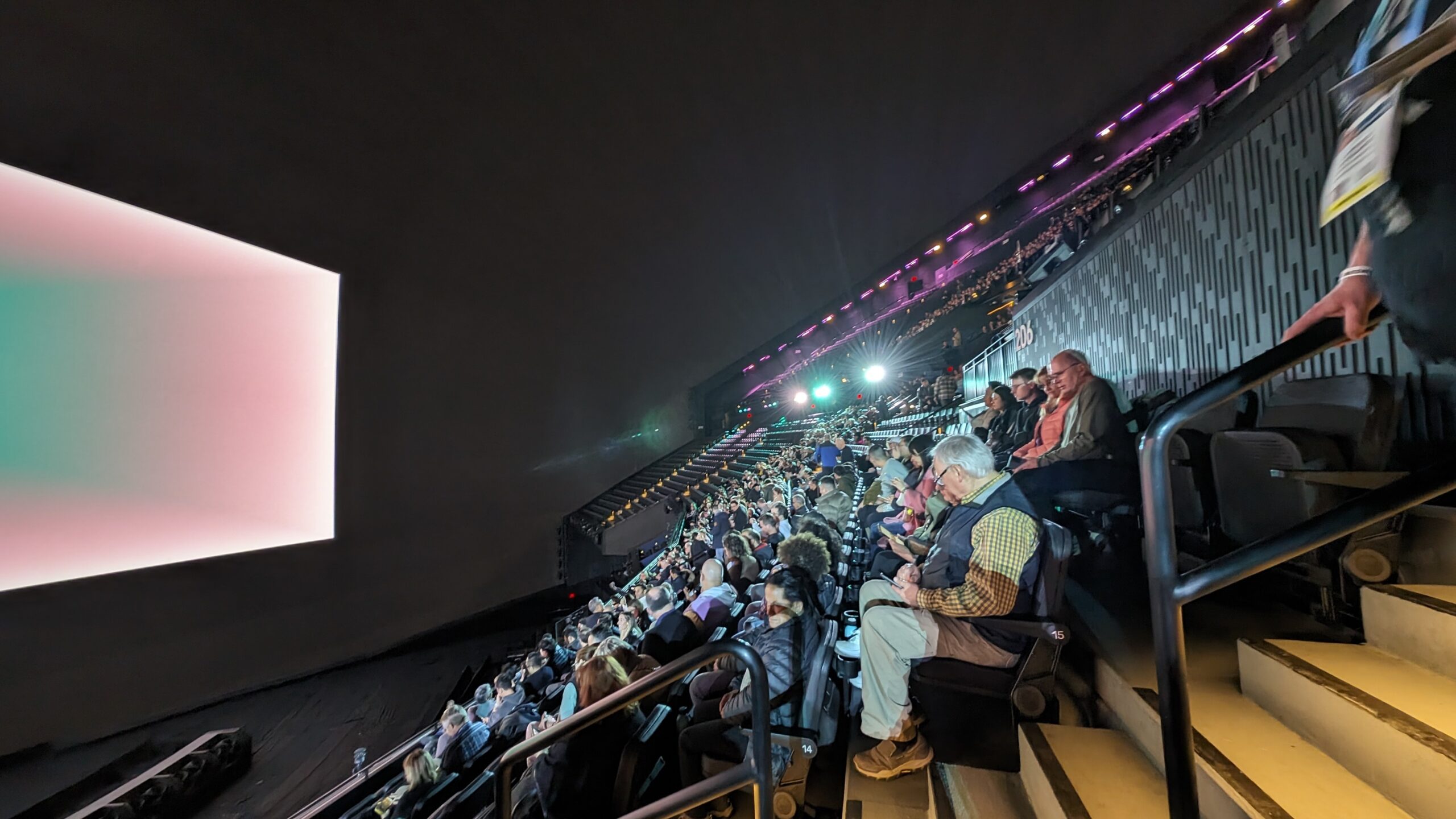
In addition, Sphere utilises 4D effects such as vibration, wind and scent to create an immersive experience. There are subharmonic generators (“buttkickers”) under the seats, which can reproduce ultra-low frequencies down to 5 Hz. The wind machines can create everything from fog and light breezes to strong winds, and can also affect the temperature and humidity in the theatre.
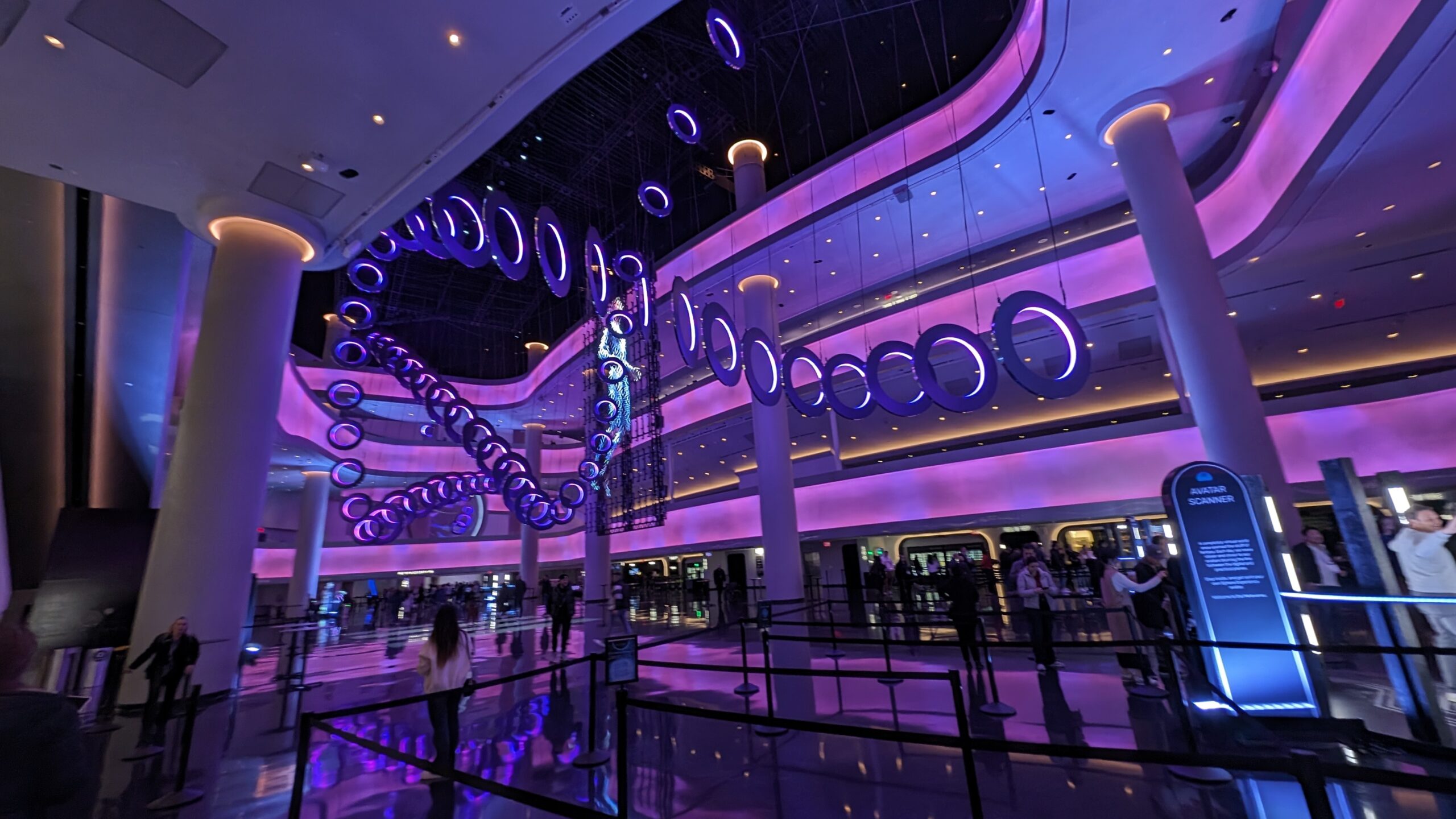
A Postcard from Earth: The Sphere Experience
Of course, such an arena requires customised content, and during CES week in Las Vegas, we had the opportunity to check out the film A Postcard from Earth, which is one of the main attractions. The film comes from director Darren Aronofsky and is made exclusively for Sphere.
The raw footage is filmed with the specialised Big Sky camera, developed in-house by Sphere Studios. This uses a square 18K image sensor from STMelectronics, and a huge 150-degree fisheye lens. These are the optics required to fill the huge Sphere screen with a sharp and detailed image. We reckon this type of camera technology could also have more interesting applications in the future, such as VR glasses. Apple Vision Pro, anyone?
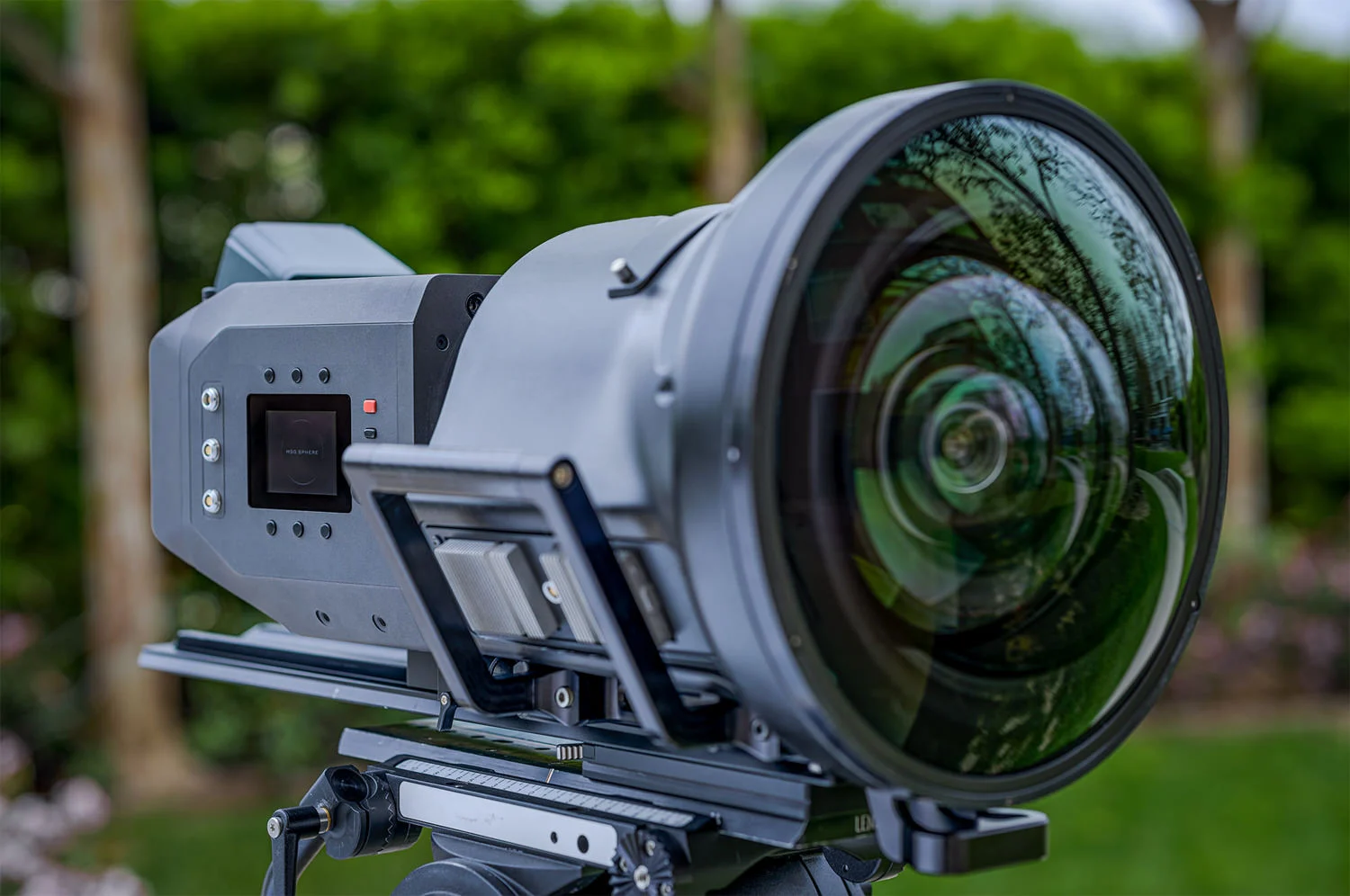
So what is Sphere like in practice?
The plot of A Postcard from Earth is fairly simple and slightly melancholic – “this is what the Earth was like before we left it” – but the way it is conveyed is beyond anything we have experienced before. As mentioned, Sphere has an arsenal of tools that result in a strikingly realistic film experience.
The story first takes us out into the universe and a futuristic spaceship, where Earth is just a dot in the distance. Eventually, we fly back to Earth and get an up-close look at the natural and animal world across seven continents – natural phenomena as well as man-made monuments – all rendered by Sphere’s enormous image, sound and wind machines.
Picture quality – contrast, brightness and colour – is excellent, on a par with a premium TV screen or cinema screen or better – just infinitely bigger. It’s also sharper and more detailed than anything else we’ve seen, and virtually seamless.
We did notice a couple of screen panels where the colours were slightly off from the others, but on the whole the picture quality was sharp and coherent. We could turn our heads and look at different objects in the image, much like we do in real life.
The sound reproduction is as huge as the image. The soundscape could vary in size according to the action, ranging from small and precisely localised sound effects to large sound events with massive scale. Then there was the realistic rumble from the subwoofers that travelled through marrow and bone – aided by infrasonic vibrators mounted under the seats.
What a ride!
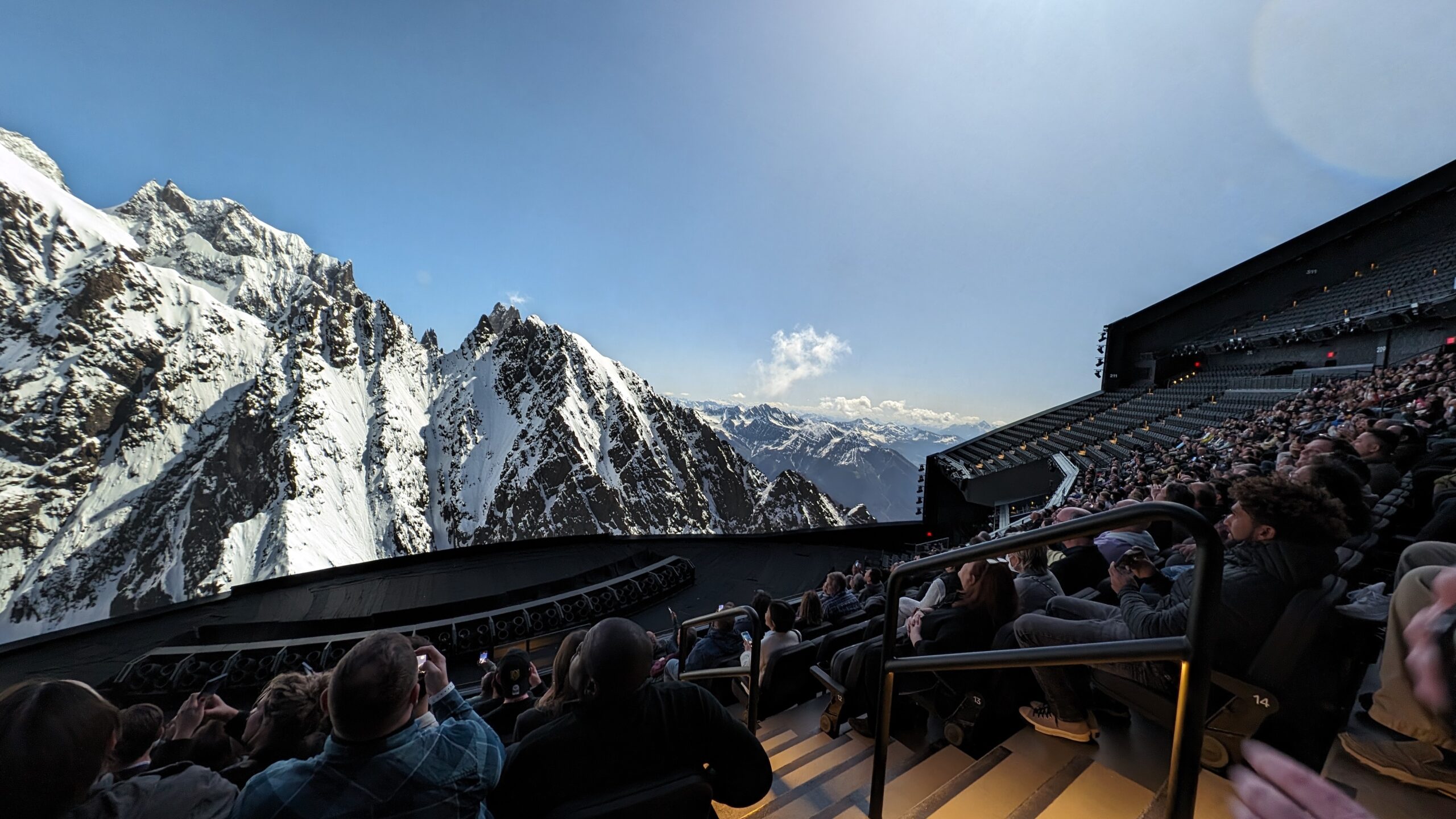
With such massive effects that affect several of our senses at the same time, a completely different realism is achieved than we are used to from regular cinema. It wasn’t necessarily equally convincing throughout the film, but when all the systems were working together, there were moments where we experienced a state of total immersion, where the action simply felt real – like being there, with both body and mind.
My colleague, John Alex Hvidlykke, who is a former cinema operator in a digital 3D cinema, agrees:
“It’s the greatest cinema experience I’ve had in my life. Not the greatest film experience, but visually the greatest.”
One thing is for sure, we want to see and hear more of this! In Las Vegas, of course, but we also hope the technology will eventually be brought to Europe and the Nordic theme parks. We’ve probably only seen the beginning of how this camera and screen technology can be used to convey different types of content. Even the coolest IMAX cinemas pale in comparison to this…
Sphere will remain open in the future and, in addition to A Postcard from Earth, you will be able to experience bands such as U2 and Phish inside the “sphere”. Ticket prices are around $150 for the good seats.
There was actually a project for building a copy of the Spehere in the London suburb of Stratford, but it was turned down by the mayor of London in November last year.
See more about the technology behind Sphere and the Big Sky camera in this video from the Wall Street Journal:
